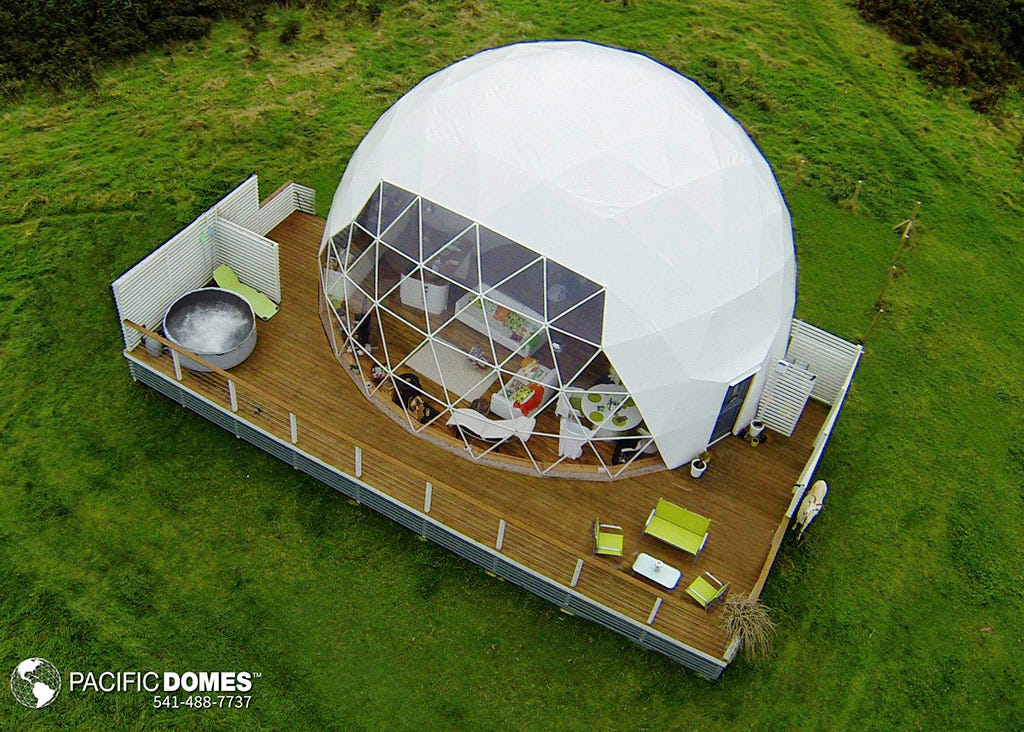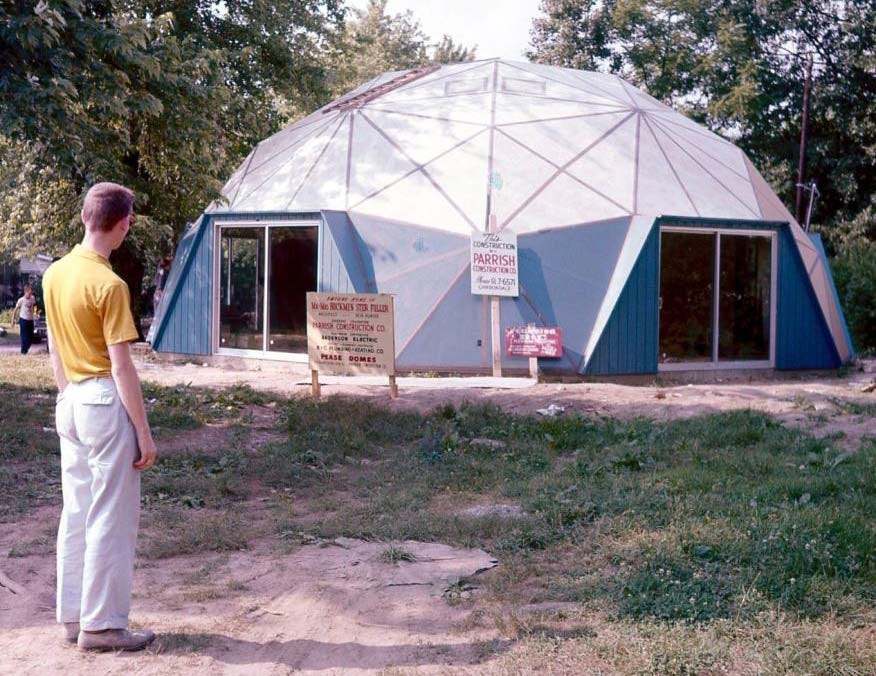
Since they were first imagined by Buckminster Fuller, geodesic domes have been an icon of the future. Need to invoke a shiny sci-fi tomorrow? Put a dome on it. In the real world however, beyond applications such as DEW-line radar installations, theme parks and attractions, the potential of domes for homes remains mostly untapped. I think extreme weather is going to change that.
I don’t expect many people will imitate Bucky Fuller entirely and make the dome their actual living space. Life in a bubble does present challenges. He and his wife Anne Hewlett noted that a dome house provided few vertical surfaces for hanging pictures! What is more likely will be the construction of domes over existing homes, creating a climate-controlled, air-scrubbed oasis, protecting inhabitants from temperature extremes, wildfire smoke, and heavy precipitation, be it rain, snow, or hail. Imagine a snow globe. Only there’s no snow.
What I don’t think will happen (and may not be possible) will be the installation of city-sized domes over urban areas. The limitations of materials, human cooperation, and taxpayer reluctance will likely confound attempts to put cities under glass. A quick web search reveals someone else has already run the numbers and came up with a ballpark number of a quarter-million dollars per person for a 2.5 square kilometres (250 hectare) dome housing 200,000. It may well be that this comes to represent the upper limit of a single dome structure. Conditioning an environment the size of a conurbation would require the construction of interconnected bubbles demanding all kinds of cooperation between agencies and governments. A scenario that feels… aspirational.
Even small cities would be hard-pressed to envelope their jurisdictions in a dome, due to physical and monetary constraints. As an example, the city of Williams Lake in the Cariboo is 33 square kilometres with approximately 11,000 residents. One suspects there is very little appetite locally to increase population density to a point where a dome over the city could be financially viable and economically palatable to taxpayers, even as a regional initiative.

For individuals, it is a different equation. There are already domes on the market that could provide enough cover for an average home and some surrounding green space. They are being marketed as residences, event spaces, and greenhouses for northern latitudes. Given the coming degradations we can expect to air quality in the Cariboo from wildfires, the increases in extreme heat and intense rain events, and the risk to life and property these factors represent, putting a bubble over your home and garden will make more and more sense in the coming years. All this without mentioning the security (real and imagined) a dome-shaped virtual moat offers rural homeowners if civil unrest and hunger become a part of life in Canada’s long-term future.
It’s hard to see domes as a bright spot in an otherwise dark future. If anything, they may come to represent privilege, property, and our failure to adapt, collaborate, and get along as communities. As a realistic solution to weather and climate challenges however, the geodesic dome may yet become a common sight in the Cariboo.
Are domes a solution for sustainable rural futurism? Can we go big when we go dome and cover our cities, or is small beautiful in this instance? Let me know what you think in the comments.




